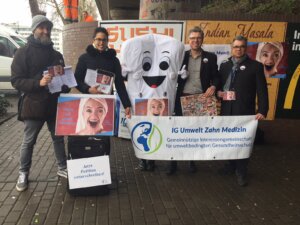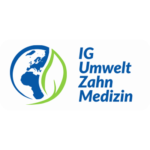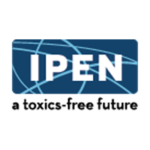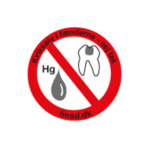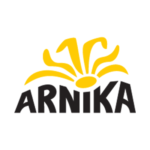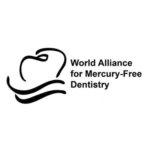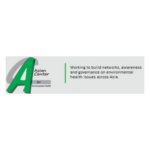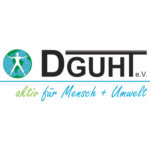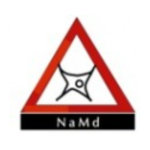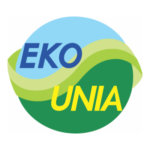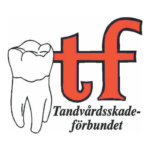The IDS in Cologne is the world’s leading dental trade fair where manufacturers present their latest products for the entire dental industry.
With our team of the IG Umwelt Zahn Medizin we were on site and collected votes for our petition “Mund Auf Gegen Amalgam“. Apart of this we were having important discussions with representatives of the the German Dental Association and the Association of the German Dental Industry about the future of amalgam, and in charge of the World Alliance for Mercury-Free Dentistry we met with representatives of the UN Environmental Programme and the WHO.
Furthermore, we investigated in the field of inexpensive and time-saving filling materials and were curious to see to what extent manufacturers advertise these now as amalgam alternatives in their communications. After the ban on amalgam for children, pregnant and breastfeeding women 3M and VOCO for example, have already actively promoted this in a campaign.
At the IDS, 3M presented, as one might have expected, its proven glass ionomer cement (which has an approval for Class I – and limited Class II indications) and is counting now increasingly on its improved Bulk-fill Composite.
VOCO came up with a world’s first in this respect. They have developed an application-gun in which the bulk-fill composite is heated up and becomes flowable. This allows it to be applied bubble-free and to close well at the edges. After a short time, it turns viscous and can be modelled. The material is then cured with a lamp.
GC explained that the ban on amalgam was a great benefit for patients from a health and aesthetic point of view. They promoted a whole range of alternatives for both Need- and Want- dentistry, but in particular their glass ionomer cements, which have unrestricted approval for Class I and Class II indications.
Apart of Kulzer and Kuraray (who do not offer amalgam themselves), Ivoclar, SDI, DMG and Merz have also improved their (bulk fill) composite range.
Dentsply Sirona presented a highly ambitious project: a self-adhesive and application-resistant restoration material as alternative to amalgam. According to the manufacturer, it combines the simplicity of processing a glass ionomer with the durability of classic composites while maintaining good aesthetics. The dentist can therefore treat a cavity in only one layer without adhesive and without retentive preparation. This technology is particularly indicated when there are clinical, temporal or financial limitations for the definitive restoration of a tooth with a composite.
At its booth, Kerr presented the well-known Sonic Composite System, which is activated by sound waves and has now been optimized for greater layer depth. It read: “Fill cavities up to 5 mm deep with a single portion, with a single material – and without liner or overcap layer”.
From our point of view, it was particularly pleasing that we had to search intensively for the advertising of amalgam fillings and that we could only find them in the displays of two smaller manufacturers (Nordiska and DMP). The stubbornness of Nordiska from Sweden, where amalgam has been banned since 2009, is particularly remarkable.
Maybe they should better take Merz as an example, who promised to leave the amalgam business by the end of the year.
On the whole, however, the starting signal seems to have been given and the race for the best amalgam alternatives has begun. The manufacturers said, that amalgam would deter the customers…
For us it was a successful trip, with many interesting conversations and experiences.
Many thanks to Dr. Andreas Lozert, Member of the Board of the German Society for Environmental and Human Toxicology (DGUHT) and Dr. Stefan Dietsche, Member of the Board of the European Academy of Clinical Environmental Medicine (EUROPAEM) for their support in the petition and their participation in the discussion with representatives of the UN Environment Programme and the WHO during the fair.

